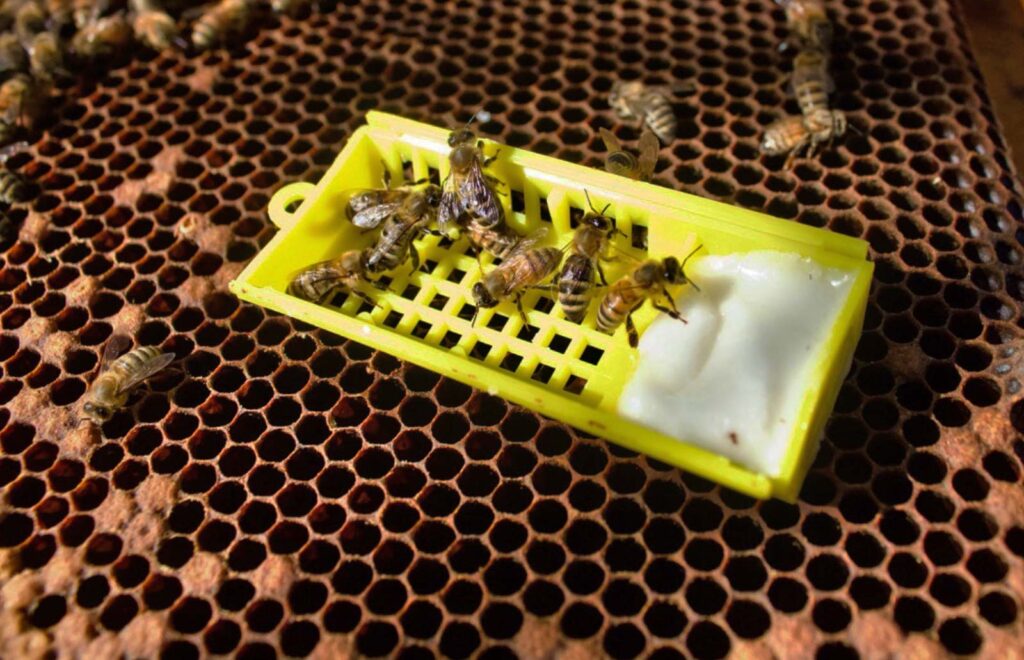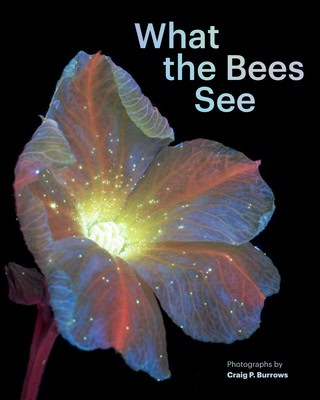AFB vaccine may protect from viral disease spread by varroa mites
Though results are still preliminary, a field test of a conditionally approved American Foulbrood (AFB) vaccine that was conducted by Dalan Animal Health at Vidalia Apicultural Services & Bee Co. in Lyons, Georgia failed to prove efficacy against AFB (because it was not detected in either the control or vaccinated groups), PCR tests showed an 83% lower rate of varroa-vectored virus infections in the vaccinated colonies.
It is not clear why a vaccine designed to target the AFB bacterial infection would have an impact on viral disease: there is no science to explain. When asked to comment, biochemist Andrea Gwyn of the biopharmaceutical company GSK hypothesizes that it may be because bees’ immune systems aren’t as specific as those of humans and other mammals: interventions that increase bees’ immune responses may help them take on more than one immunological challenge. “We’re just trying to think it through: What is really happening?” Swift says, “It’s humbling.… You get these results sometimes that weren’t what you were expecting. This could be somebody’s Ph.D. now to go and tackle this particular topic.”
Beekeepers who use multiple types of Varroa treatment found to have higher colony survival rates
Research led by Darcy Gray (Center for Pollinator Research, at Pennsylvania State University) using five years of data from over 3,000 Pennsylvania beekeepers has found that sometimes "more is more" when treating for varroa. For the study, the researchers used data from an annual survey on winter honey bee colony loss and beekeeping management that has been sent to Pennsylvania beekeepers each spring for more than 15 years. To determine key drivers of winter loss, Gray's team simultaneously investigated the effects of weather conditions, landscape factors, and management of parasites, a first!
Their "models found weather conditions are strongly associated with survival, but multiple-treatment type colonies had higher survival across a broader range of climate conditions. These findings suggest that the integrated pest management approach of combining treatment types can potentially buffer managed honey bee colonies from adverse weather conditions."
,
They're still here: Invasive yellow-legged hornet queen captured in Georgia
In early April, staffers of the Georgia Department of Agriculture captured a yellow legged hornet queen and destroyed an embryonic nest in Savannah, Georgia. This follows the capture of another queen in nearby South Carolina in March.
The North Carolina Department of Agriculture and Consumer Services Plant Division is advising North Carolinians to be on the lookout for early-stage nests of yellow-legged hornets and to report sightings.
There have not been any sightings of the invasive hornet species in North Carolina
The Georgia Department of Agriculture has produced and posted a Yellow Legged Hornet Trapping Guide video.
"Standard methods for rearing and selection of Apis mellifera queens 2.0"
A lab led by Brock Harpur recently published an article intended cover a wide range of methods currently in use and recommended in modern queen rearing, selection, and breeding. The recommendations are meant to serve as standards for scientific and practical beekeeping purposes. Because the subject of queen rearing and selection is too large to be covered within this paper, ample references are given to facilitate comprehensive studies.
“The traditional methods of bee breeding have been around for nearly 100 years,” said Purdue University’s Brock Harpur, assistant professor of entomology. Although breeders have made progress, many of their methods remain unchanged even with the recent availability of affordable gene sequencing. “The honeybee genome was sequenced in 2006. There really hasn’t been a lot of bee breeding in this country that’s been empowered by that resource.”
The Harpur Lab is focused on bridging the gaps in our understanding of genomics, the evolution of eusocial species, and the adaptive value of their behaviors.
Longer, warmer autumns aren't good for bees
An article in the March 2024 Scientific Reports warns that warmer autumns and winters could reduce honey bee overwintering survival with potential risks for pollination services. The effect of climate change on honey bee colony losses has only recently been explored by researchers. While correlations between higher winter temperatures and greater colony losses have been noted, the impacts of warmer autumn and winter temperatures on colony population dynamics and age structure as an underlying cause of reduced colony survival had not been examined.
Focusing on the Pacific Northwest US, a team from Washington State University led by Kirti Rajagopalan used statistical models for climate change and honeybee population dynamics, finding it likely that warmer autumns will extend honeybee flight times. The simulations support the hypothesis that late-season flight alters the overwintering colony age structure, skews the population towards older bees, and leads to greater risks of colony failure in the spring.
USDA launches online disaster assistance decision tool that includes honey bees

The U.S. Department of Agriculture, in partnership with FarmRaise, launched (May 29, 2024) a new, online Emergency Assistance for Livestock, Honey Bees and Farm-raised Fish Program (ELAP) Decision Tool. The USDA’s Farm Service Agency (FSA) tool is designed to assist agricultural producers who have been impacted by natural disasters access available program support. This site is meant to help gather the information and documentation folks who have faced losses will need if applying for assistance.
FarmRaise is an ag sector startup that builds tools, including an app (FarmRaise Tracks), for farm financial management.
As North America faces predictions of a historically active Atlantic hurricane season, Free State beekeepers may be curious about this and other resources to help protect their investments and income.
What the Bees See: an Apis-eyed view of the world
New from MIT Press, What The Bees See by Craig P. Burrows includes breathtaking pictures of the UV-lit world of honeybees and others. The book includes 70 pages of exquisite macro photos of French lavender, creeping fuchsia, cucumber flower and more — each a sparkly, glowing conversation between plants and the animals they really care about!
The author, a long term specialist in the method, uses ultraviolet-induced visible fluorescence (UVIVF) photography of flowers and nature and offers fascinating research that explores every aspect of our relationship with honeybees. Burrows also discusses the history of beekeeping, current environmental impacts affecting bees, and the rise of bee products in medical and wellness spaces.
According to the NY Times Book Review, "These hallucinatory images don’t merely simulate a bee’s perspective so much as help us to imagine an alternative reality: that of a creature whose fate is indivisibly bound up with our own.”
[Return to June 2024 BeeLine newsletter]







